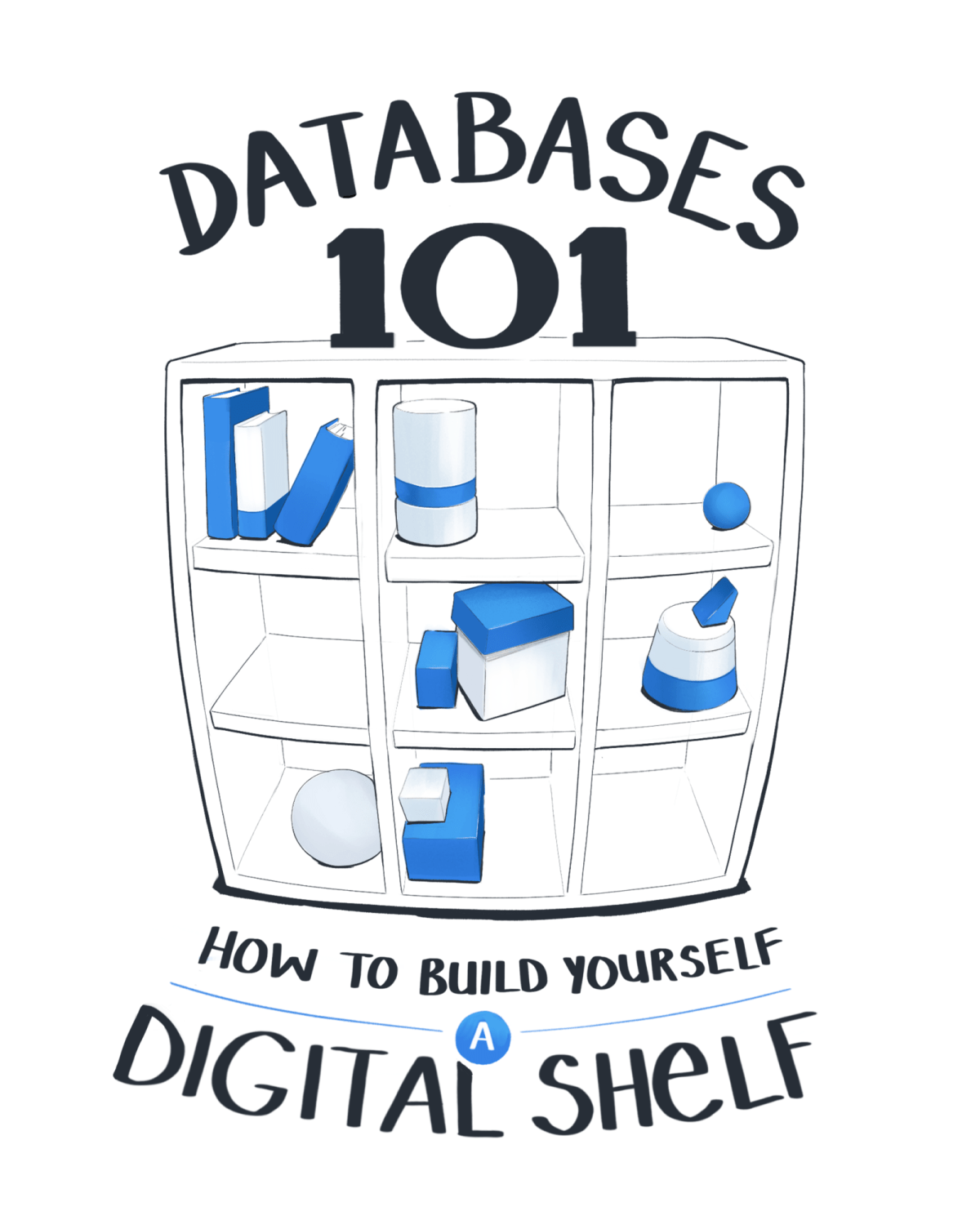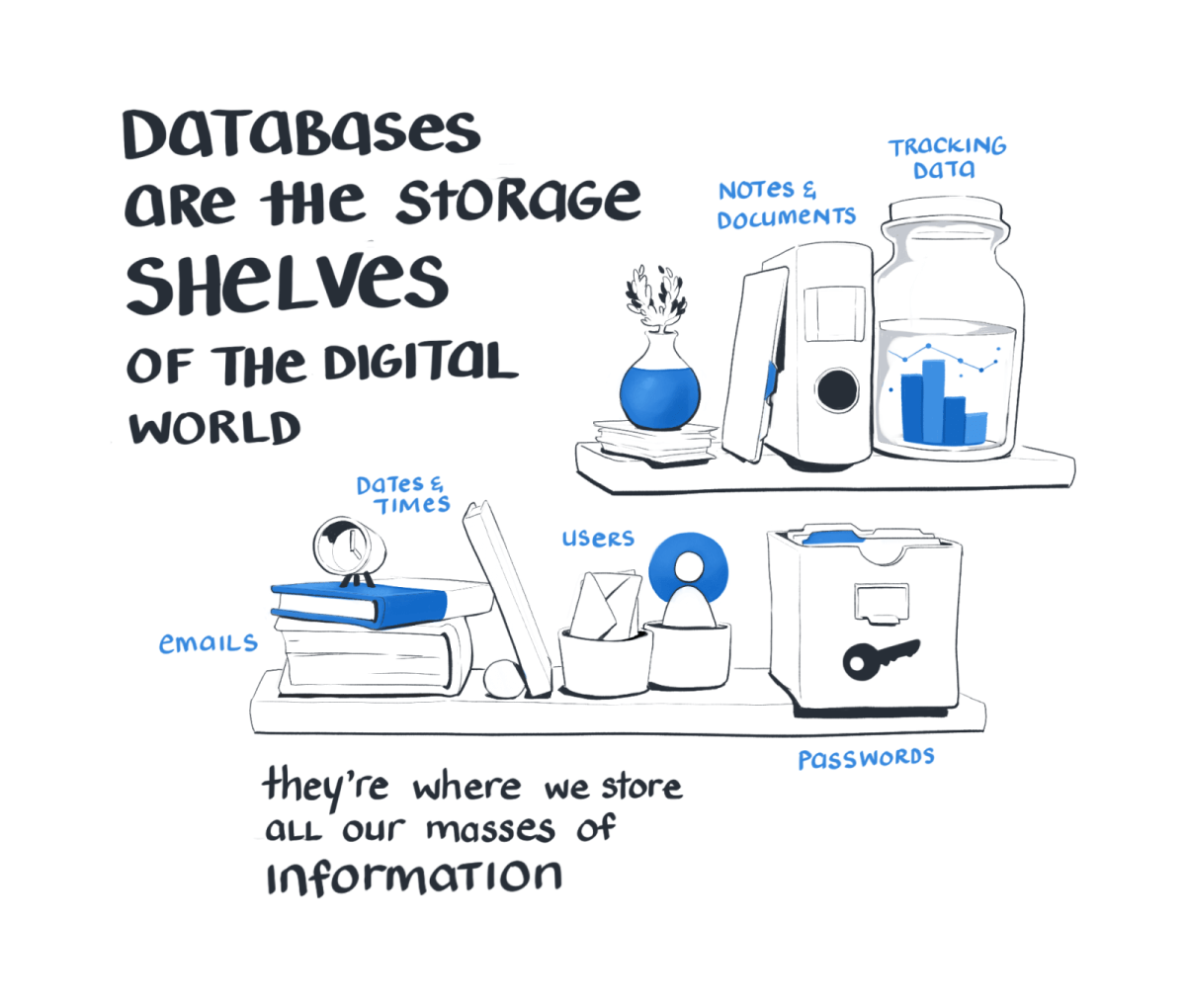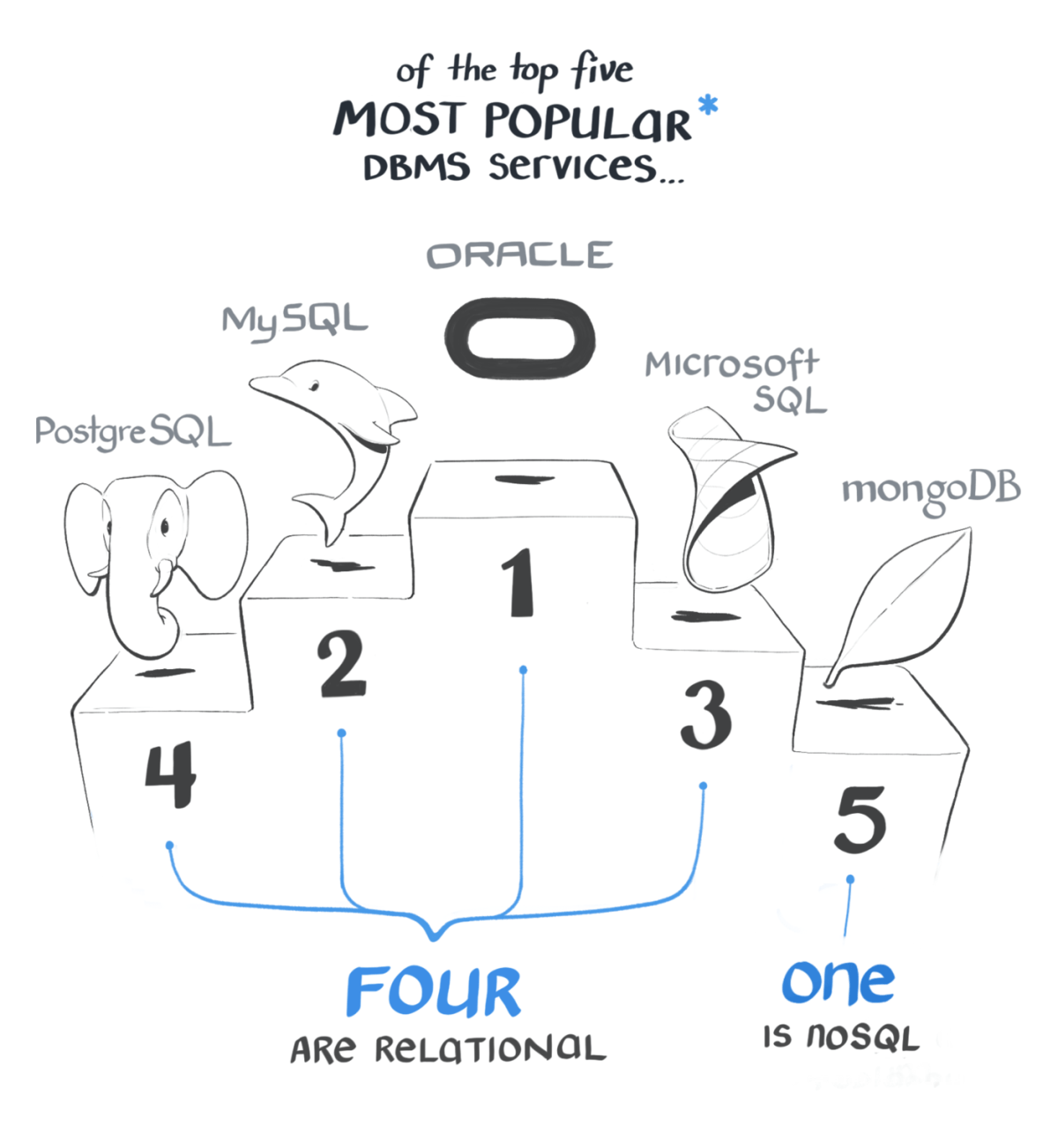A Shelfish Starter Guide to Databases
Last tended on May 10, 2019






Keep Learning
- SQL Fundamentalscourse with Tyler Clark
- Get Started With PostgreSQLcourse with Brett Cassette
References
- Basics of NoSQL Databasesby freeCodeCamp
- Databases 101by Thomas LaRock
- SQL vs NoSQL: The Differencesfrom SitePoint
- What is NoSQL?from MongoDB
Want to share?
Tell Twitter About It